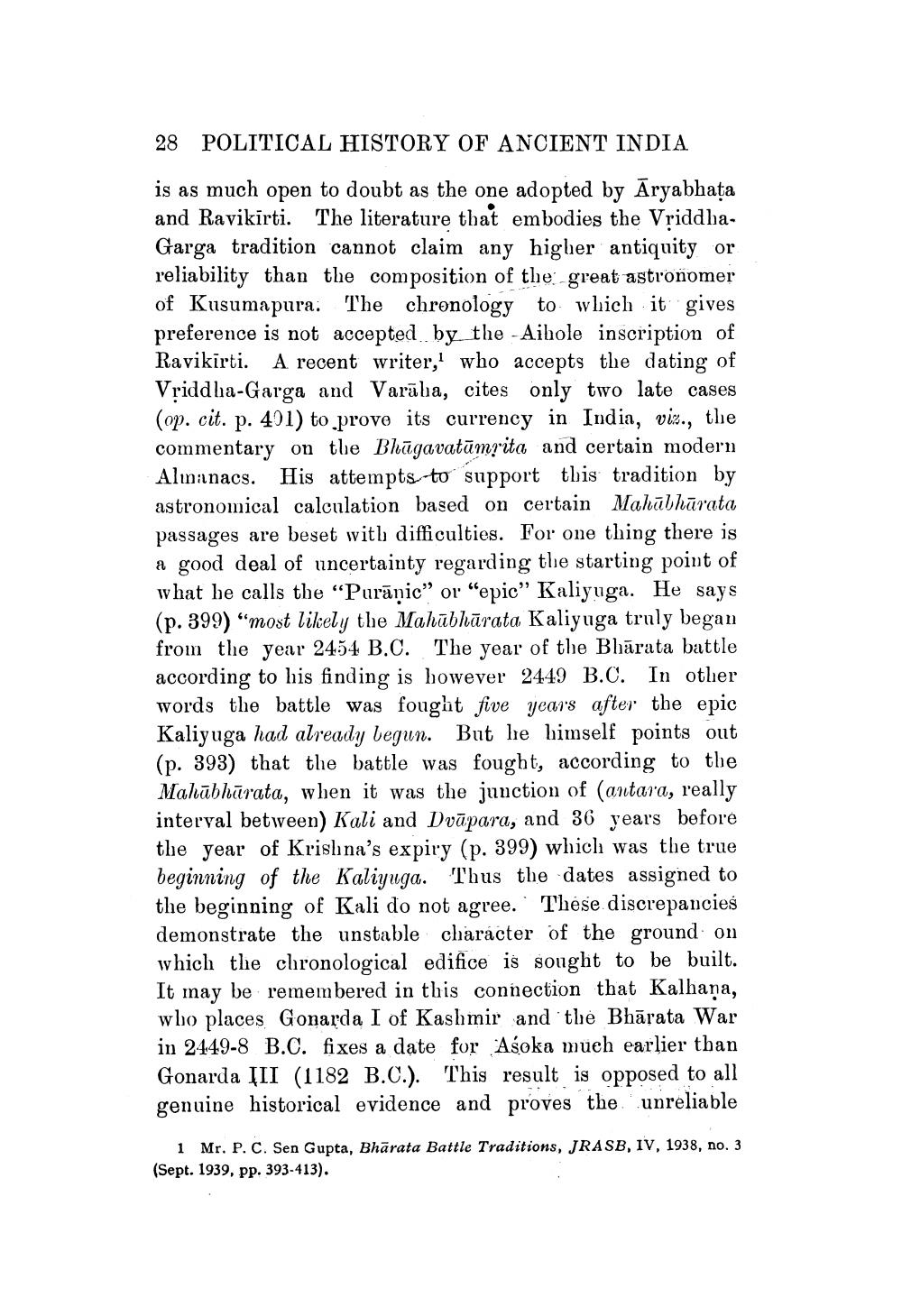________________
28 POLITICAL HISTORY OF ANCIENT INDIA
is as much open to doubt as the one adopted by Aryabhata and Ravikirti. The literature that embodies the VriddhaGarga tradition cannot claim any higher antiquity or reliability than the composition of the great astronomer of Kusumapura. The chronology to wliich it gives preference is not accepted by the - Aibole inscription of Ravikirti. A recent writer,' who accepts the dating of Vriddha-Garga and Varāba, cites only two late cases (op. cit. p. 401) to prove its currency in India, viz., the commentary on the Bhagavatāmpita and certain modern Alinanacs. His attempts to support this tradition by astronomical calculation based on certain Mahābhārata passages are beset with difficulties. For one thing there is a good deal of uncertainty regarding the starting point of what he calls the “Purānic” or “epic" Kaliyuga. He says (p. 399) “most likely the Mahābhārata Kaliyuga truly began from the year 2454 B.C. The year of the Bhārata battle according to his finding is however 2449 B.C. In other words the battle was fought five years after the epic Kaliyuga had already begun. But he himself points out (p. 393) that the battle was fought, according to the Mahābhūrata, when it was the junction of (antara, really interval between) Kali and Dvāpara, and 36 years before the year of Krislina's expiry (p. 399) which was the true beginning of the Kaliyuga. Thus the dates assigned to the beginning of Kali do not agree. These discrepancies demonstrate the unstable character of the ground on which the chronological edifice is sought to be built. It may be remembered in this connection that Kalhana, who places Gonarda I of Kashmir and the Bhārata War in 2449-8 B.C. fixes a date for Asoka much earlier than Gonarda III (1182 B.C.). This result is opposed to all genuine historical evidence and proves the unreliable
1 Mr. P. C. Sen Gupta, Bhārata Battle Traditions, JRASB, IV, 1938, no. 3 (Sept. 1939, pp. 393-413).




